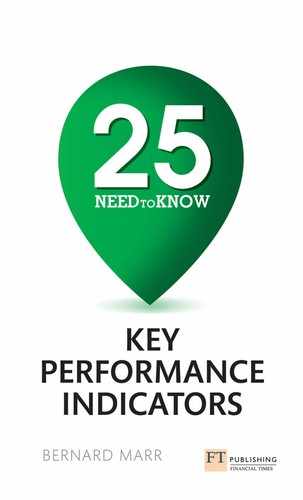Chapter 9
Gross profit margin
- Why: To better understand your financial performance, especially how efficient a company is in producing its products or services
- What: To measure production efficiency by looking at all production costs relative to all sales revenue
- When: When investors and managers want to understand and compare the production efficiency of businesses
- The question this indicator helps you to answer: how much gross profit are we generating for each dollar of revenue generated?
Why does this KPI matter?
Another profitability ratio which is widely used is the gross profit margin. Instead of the net profit margin, where we are deducting all costs from the revenue, here we are only deducting the cost of goods sold (sometimes referred to as cost of sales). Costs of goods are the direct production and distribution costs that a company incurs for supplies, inventory, production and distribution of its products or services.
Looking at how much it costs a company to produce its goods and services and putting this in relation to sales revenue gives us a ratio of production efficiency. A gross profit margin of 30% would indicate that for each dollar in sales, the company spent 70 cents in direct costs to produce the good or service that the firm sold.
The gross profit margin basically shows us how much from each dollar of a company’s revenue is left after taking away the cost of goods sold, and therefore how much money is available to cover overheads, other expenses and of course retained earnings and dividends. This also means that the gross profit margin should be much higher than the net profit margin (see Chapter 8).
A high gross profit margin would indicate that a company is likely to make a reasonable profit as long as it keeps the remaining costs under control. A low gross profit margin, on the other hand, would indicate that the production costs are too high and that its production efficiency is not managed to an appropriate level.
For managers, gross profit margins are particularly useful when compared over time and relative to other companies in the same sector. Investors often compare gross profit margins across industries to identify the most profitable and attractive sectors and companies to invest in.
How do I measure it?
How do I collect the data?
The data for gross profit margin are captured through the monthly management accounting process and reported in the profit and loss statement.
What formula do I use?
Revenue − Cost of goods sold

Revenues
How often do I measure it?
Total gross profit margin is calculated monthly as part of the normal management reporting cycle.
Where do I find the data?
The revenue and cost of goods sold are extracted from the accounting data.
How difficult or costly is it to measure?
Gross profit margin is a standard measurement within commercial organisations and there is no cost or effort required in collecting the data above, which are needed for monthly and other period accounting purposes.
How do I set targets for this KPI?
Gross profit margins vary by industry, but all else being equal, the higher a company’s profit margin compared to its competitors, the better. In some industries, such as clothing, gross profit margins are expected to be near the 40% mark, as the goods need to be bought from suppliers at a certain rate before they are resold. In other industries, such as software product development, where the cost of duplication is negligible, the gross profit margin can be higher than 80%.
Also, a company’s gross profit margin should be stable. It should not fluctuate much from one period to another, unless the industry in which it operates has been undergoing drastic changes which will affect the cost of goods sold or pricing policies.
Practical example
Simply put, gross profit margin represents the difference between total sales and the cost of those sales.
For example, if total sales equal $1,000 and cost of sales equals $300, then the margin equals $700.
Gross profit margin can be expressed as a monetary value or as a percentage. As a percentage, the gross profit margin is stated as a percentage of revenues. The equation is:
Using the preceding example, the margin would be 70%.

Basically, a 70% gross profit margin means that for every dollar generated in sales, the company has 70 cents left over to cover other expenses and profit.
Some tips and traps to consider
Although gross profit margin is an important corporate measure, better performance insights can be gleaned by analysing gross profit margin at the business unit, department or product level. This can provide useful data on the real drivers of profit within the enterprise.
It is also worth bearing in mind that markup and gross profit margin on a single product, or group of products, are not, as many erroneously believe, the same thing. Gross profit margin is a percentage of the selling price, while markup is traditionally calculated as a percentage of the seller’s cost.
Using the numbers from the preceding example, if an organisation purchases goods for $300 and prices them for sale at $1,000, the markup is $700. As a percentage, this markup comes to 233%:
In other words, if your business requires a 70% margin to show a profit, your average markup will have to be 233%.
This example shows that, although markup and margin may be the same in dollars ($700), they represent two different concepts as percentages (233% versus 70%). More than a few new businesses have failed to make their expected profits because the owners assumed that if their markup is X%, their margin will also be X%. This is not the case.
Further reading and references
www.investopedia.com/articles/fundamental/04/042804.asp#axzz1U9QWeAQD
http://bizfinance.about.com/od/financialratios/a/Profitability_Ratios.htm
http://beginnersinvest.about.com/od/incomestatementanalysis/a/gross-profit-margin.htm
www.ccdconsultants.com/documentation/financial-ratios/gross-profit-margin-interpretation.html
